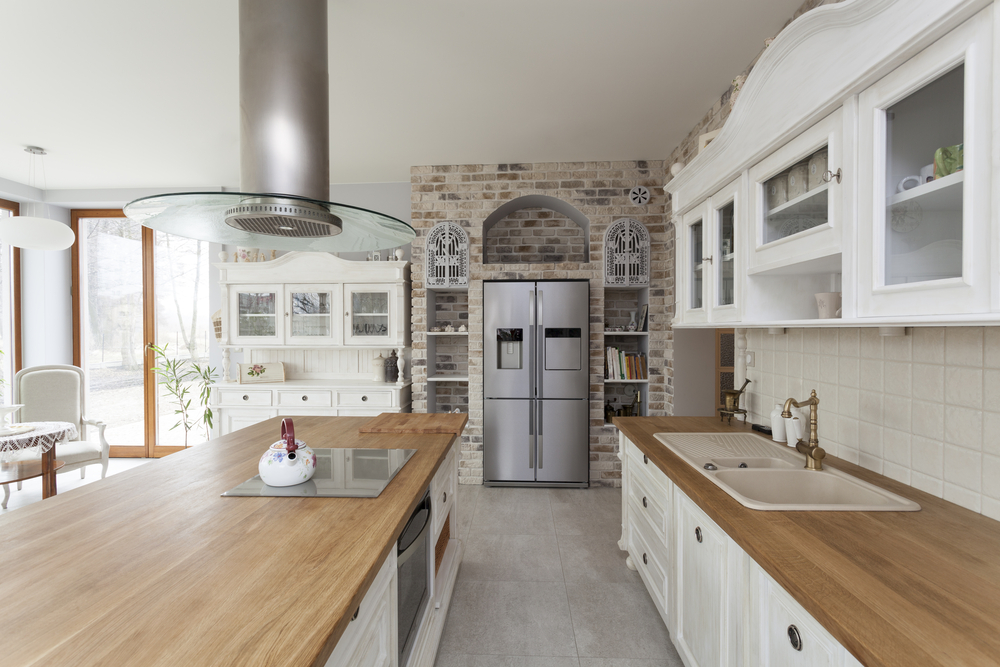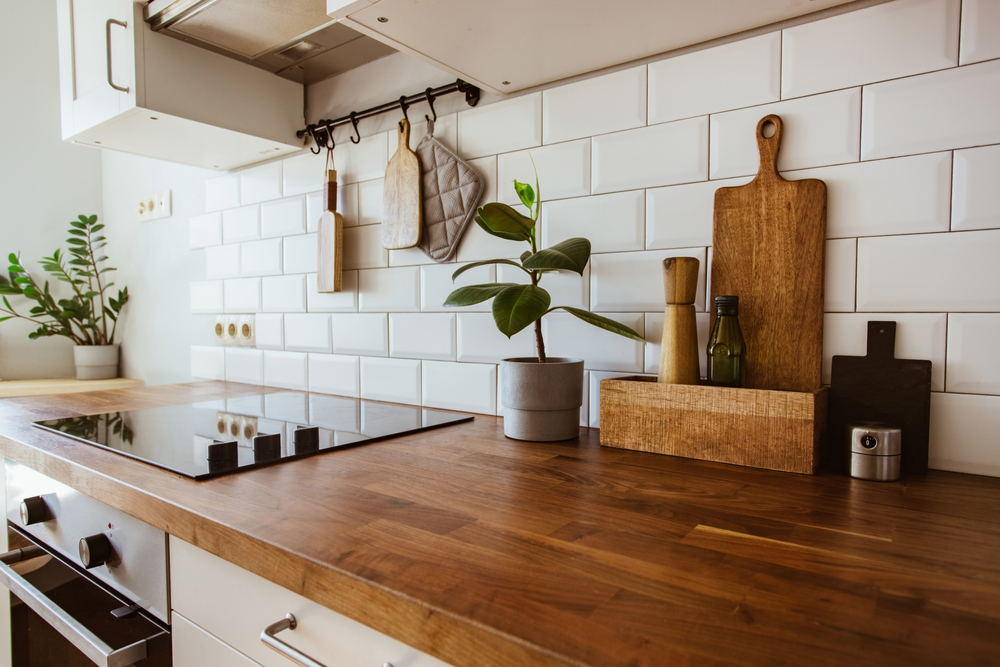
Real wood counters are an antique concept that has remained largely relevant. The wood countertop continues to be a classic as homeowners consider their alternatives for kitchen and bathroom design in the always evolving world of materials and designs. With regard to countertop materials, wood is difficult to beat for its lovely appearance and organic feel. However, using wood does have some disadvantages, particularly in the harsh atmosphere of a kitchen. Here is a general outline of what to anticipate when choosing and using wood countertops.
Styles And Wood Countertop Species
One of its biggest characteristics is the huge range of options and stylistic alterations available for wood countertops. The three main style options are flat grain, end grain, and edge grain. In addition, wood counters can have inlays, checkerboard patterns, borders, and stripes (using a combination of wood species).
When you start shopping, you’ll start to see the excellent craftsmanship used to create wood countertops from a variety of species.
Why Choose Countertops Made Of Wood?
Although they may be used for some light meal preparation, conventional butcher block worktops, which make up the majority of wood counters, are now hardly ever utilized for chopping. According to denverstoneplus, they are highly favored due to their appearance. Less expensive woods are frequently used in kitchen cabinets asa beautiful, cost-effective surface; more expensive species are used to top islands or breakfast bars where they add a lovely textural contrast or a finish akin to furniture.
Impressive wood selections include exotic iroko, deep, rich walnut, dramatic mesquite, and softly grained maple. Wood is a good option, although it does need some maintenance. Our buying, installing, and caring for these countertops guide will help you choose a surface that will last for years while still looking great and performing well.
Sustainable Wood Countertops
Given that wood is an organic material, it has a position in the green building movement. Additionally, a lot of the species utilized for counters are entirely renewable and frequently come from recycled sources. Your wood countertop’s carbon impact was only slightly increased by the fact that a tree had to be cut down and transported to make it. Solid surface, laminate, and quartz countertops, on the other hand, need a lot of energy to produce.
Wood Countertops And Stains
Countertops made of wood may etch. Many stains on a wood countertop can be removed by sanding, just like scratches, but this will damage the wood finish, and some finishes are difficult to combine new and old (colorless oil is a notable exception). If you want an oiled top with a sink and plan to use the top as a cutting surface, make sure to keep up with wiping off any standing water and sanding out any discoloration that develops. In this situation, frequent re-oiling will be required.

Countertop Wood And Moisture
Wood countertops can be damaged by moisture, especially in the vicinity of the sink. It’s essential to finish the wood countertop with a water-resistant finish if you intend to place a sink into it, or to use a different surface in the region right next to sink areas and other water fixtures. Otherwise, extended contact to water could cause the wood to splinter, warp, or even become black.
Solid Wood Countertops’ Durability
Wood is soft and forgiving. Even just a few inches away, a wine bottle breaks when dropped on a granite countertop. But fragile goods are significantly safer when made of wood. Because wood is a sensitive material, countertops made of it are susceptible to nicking and even cracking, especially if the wood is not well cared for. Fortunately, wood can be sanded so that any tiny blemishes or cracks can be quickly rectified.
Preserving Wood Countertops
Wood countertops are typically easy to maintain, even minor scratch repair, if they are finished to protect them. If you want to use the surface for both food preparation and cutting, the U.S. Food and Drug Administration suggests using odorless, colorless, food-safe mineral oil as the finish of choice for butcher block tops. The drawback is that mineral oil finishes need to be reapplied every month to maintain their effectiveness. Commercial tung oil treatments that are acceptable for food, some of which incorporate color additives, can be efficient and only need to be applied once every six months or so.